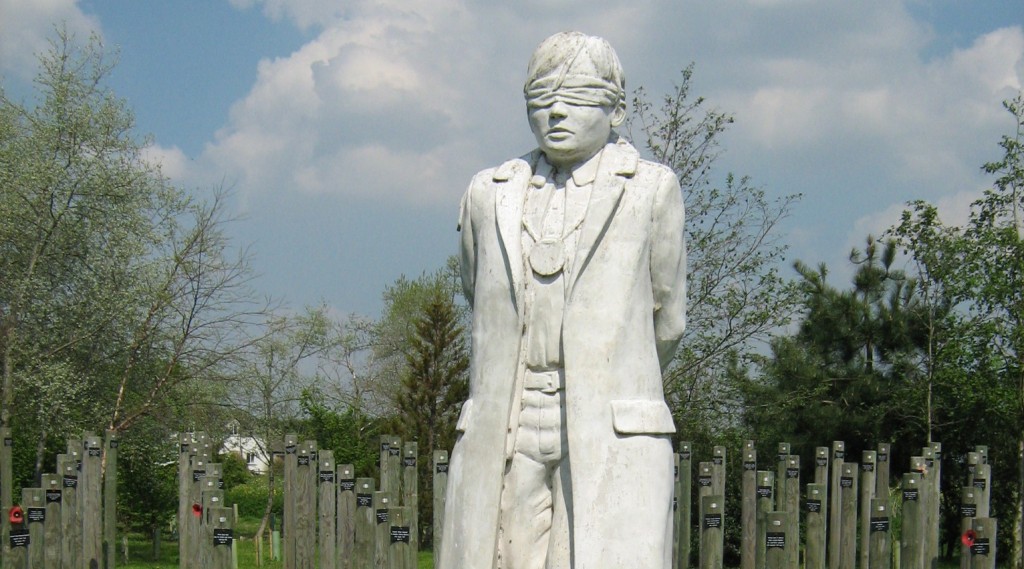
Shot at Dawn Memorial, National Memorial Arboretum, Staffordshire. By Noisette [CC BY-SA 3.0], via Wikimedia Commons.
Three simple letters (SaD), whose meaning has awful and sad connotations – SHOT AT DAWN. Mainly soldiers from all sides were shot for cowardice, abandonment of their post, casting their arms or falling asleep on post (as some examples). For these it would seem that the soldiers were suffering from the effects of war and not all were trying to abandon their posts.
Certainly there were stories of french soldiers who were unlucky when being accused of abandonment of posts – one soldier went to the First Aid Dressing station as his hand was injured. However, the Major of the post decided there was some powder on the hand and accused him of abandoning his post. You have to feel for 2 other soldiers; their Captain had ordered that they stay behind in the trench to look after equipment. Unfortunately for them, it appears a new Captain was named and when he saw them in the trench accused them of abandonment. They were shot at dawn. There are probably many stories along these lines. Some soldiers were executed for hitting their senior officer – whilst understanding the need to make an example of them I wonder whether shooting them was perhaps a bit extreme!
However, some soldiers did commit murder and 35 British soldiers were accused and executed for this.
Who was the worse country? Hard to totally identify as I could not find any numerical data of Russian/Austrian Hungarian soldiers shot but of the countries where there is some data France wins with 953. Italy shot around 750 and then Great Britain around 306. However the Germans only shot 48 of their own.
It is worth considering that armies suddenly acquired ‘Civilian Soldiers’ who did not necessarily respect authority, liked a tipple or two! and probably provided some disciplinary headaches. However, it seems the old imperial armies of France, Italy and Britain could not understand especially for the first few years of the war the physiological damage caused to soldiers living under constant bombardment.







